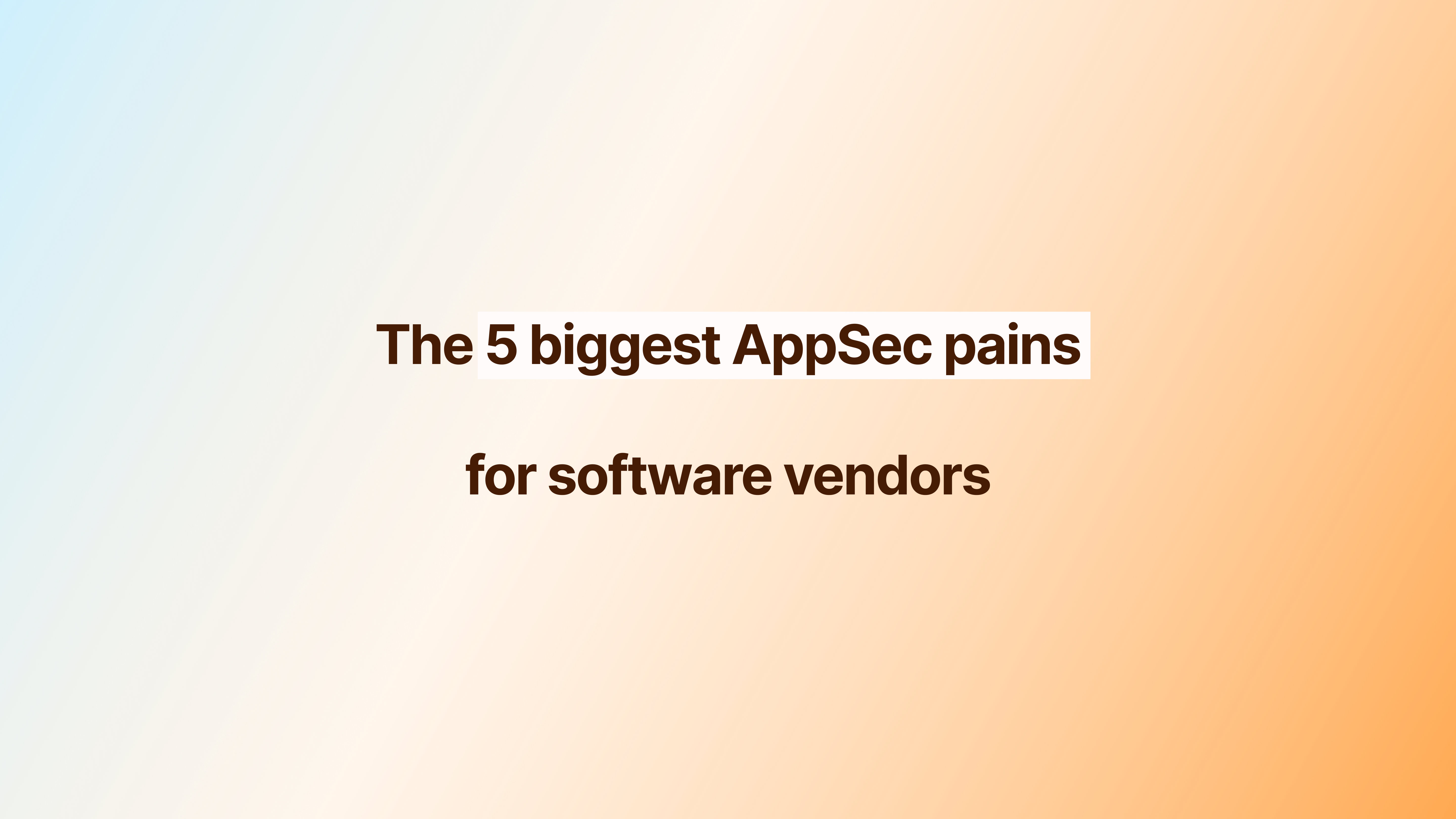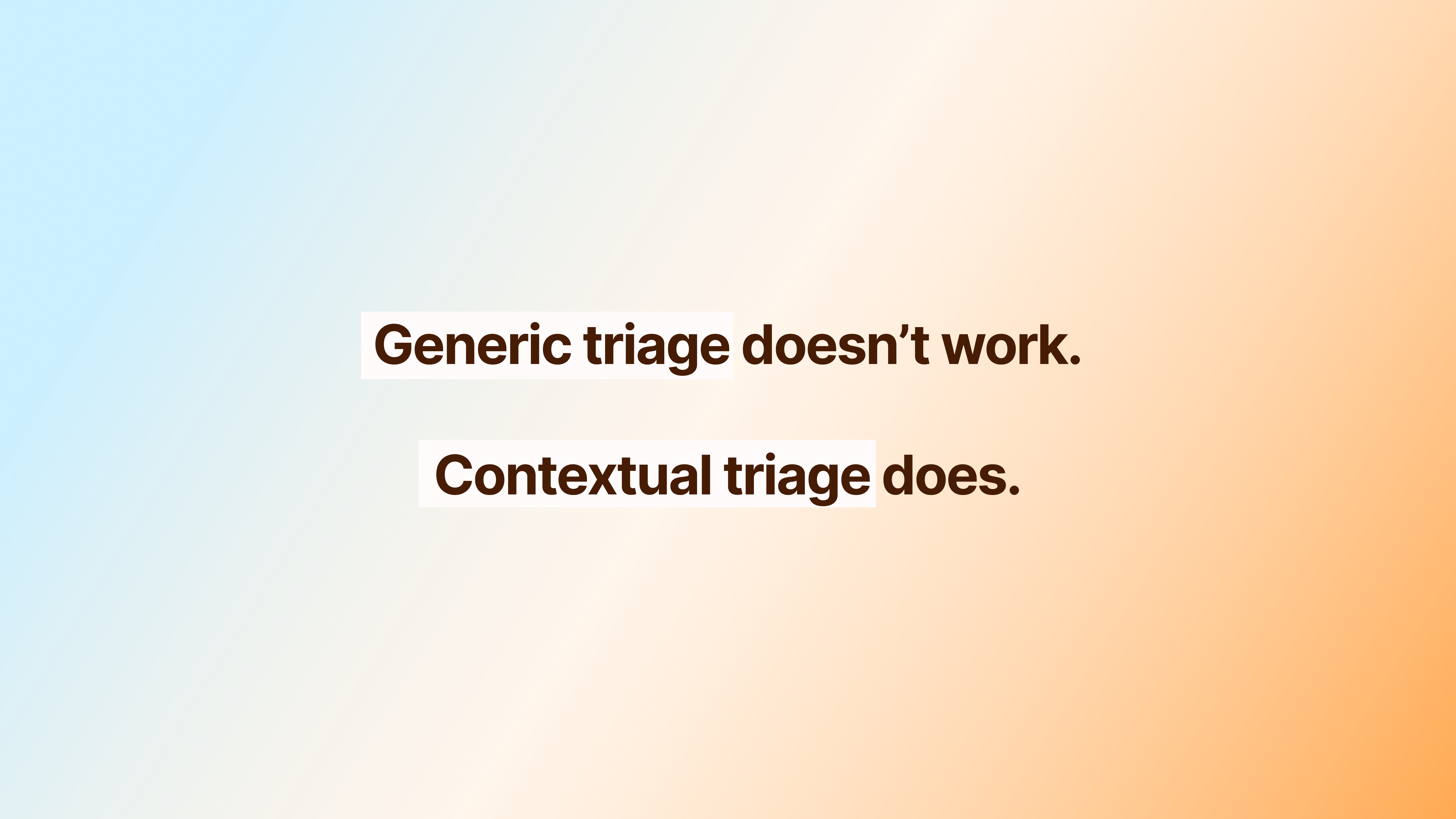
The 5 Biggest Pains in AppSec for Software Vendors

Application security is becoming existential for software vendors. Customers demand it, compliance mandates it, and attackers exploit its absence. But even among committed teams, five persistent pain points make building and scaling effective AppSec programs extremely difficult.
1. Fragmented Signals, Fragmented Timing
AppSec signals are scattered — and they rarely arrive at the same time.
SAST, SCA, container scans, IaC tools, secrets scanners, SBOMs, pentest reports, bug bounty disclosures… each operates on its own cadence. Some findings are produced in near real time, others quarterly. Some are automated, others manual. Some point to code-level flaws, others to systemic risks.
The result? Security teams are overwhelmed with disconnected inputs that are hard to correlate or prioritize. Instead of a consolidated view of risk, they get a fragmented picture — filled with duplicates, inconsistencies, and blind spots.
This misalignment of timelines and formats not only creates operational overhead — it actively slows down remediation and increases the chance of missing what matters most.
2. Vulnerabilities Are Exploding — Literally
In 2024, the number of publicly disclosed vulnerabilities (CVEs) reached 40,000, marking a 30% increase year-over-year. The NVD (National Vulnerability Database) now holds a backlog of 39,000 unprocessed CVEs — a sign of structural overload. Many in the industry now refer to 2024 as the beginning of the “vulnerability era.”
AI has only accelerated the problem. While it helps developers ship faster, it also introduces risk:
- 62% of AI-generated solutions are incorrect or contain bugs.
- 29.6% of code snippets generated by AI exhibit known security weaknesses.
Worse, many developers trust and reuse these suggestions without fully understanding the risks. Meanwhile, attackers are also weaponizing AI to craft more sophisticated phishing and intrusion campaigns.
The volume of vulnerabilities is growing faster than AppSec teams can triage or act. Noise drowns out signal. And the more code is written — by humans or AI — the more this imbalance deepens.
3. Security Culture Is Hard to Build (and Harder to Scale)
The heart of modern AppSec isn't tooling — it's culture. And yet, embedding a true security mindset into fast-moving tech teams remains one of the hardest challenges.
There’s a structural mismatch: developers prioritize speed, iteration, and delivery. Security teams focus on risk, robustness, and traceability. Both are legitimate — but they’re rarely aligned by default.
Compounding this, organizations change constantly. New hires, new stacks, new services, new pressures. What works one quarter may be obsolete the next. It’s hard to build security culture in a system that keeps shifting.
Without intentional effort, security becomes something external — a team to consult, a checklist to clear — instead of a shared responsibility. Developers often feel security is a blocker. Security teams, in turn, feel like firefighters.
Creating alignment requires shifting from rigid gates to smart guardrails, from top-down mandates to embedded, contextualized support — and from episodic training to everyday reinforcement.
4. There Are Too Few Experts, Doing Too Much Manually
Most AppSec programs are drastically understaffed. One or two engineers for dozens of developers is common. Many orgs have none at all.
And when AppSec engineers are in place, they're stuck in low-leverage workflows: chasing down tickets, analyzing scanner results, writing policies, explaining remediation paths. It’s exhausting and unsustainable.
Adding to the challenge: strong AppSec engineers are extremely rare. The most effective ones are often former developers who transitioned into security — combining engineering empathy with deep security knowledge. But this profile is hard to hire for, and even harder to grow internally. AppSec is still a young field; very few professionals have more than a few years of real experience.
To scale, teams need more than headcount — they need leverage. That means automation, contextual triage, and systems that surface and solve problems without constant human intervention.
5. Compliance Creates Friction — Not Flow
Security and compliance are often lumped together. But while they’re related, they serve different goals — and poorly integrated compliance can become a major drag on AppSec velocity.
Frameworks like FedRAMP, NIS2, DORA, and ISO 27001 don’t just require vulnerabilities to be fixed — they require them to be tracked, documented, and explained. Every decision needs traceability. Every exception needs justification.
When security processes are ad hoc or scattered across tools, meeting those compliance needs becomes painful. Teams spend more time reconciling reports than reducing risk. They pass audits, but miss real threats.
The pain isn’t compliance itself — it’s the disconnect between modern engineering workflows and the rigid expectations of compliance frameworks. Without integrated systems and automation, this gap only widens as organizations grow.
Summary: AppSec Is at a Breaking Point
The signal is fragmented. The volume is overwhelming. Culture is hard to scale. Talent is scarce. Compliance demands precision.
To meet these challenges, AppSec needs a new foundation — one that’s adaptive, intelligent, and scalable.
Glev: The Platform for Modern AppSec Teams
Glev is the AI-powered platform for modern AppSec teams.
We orchestrate autonomous agents, infused with security expertise, to streamline vulnerability management — from surfacing real risks to driving fast, tailored remediation.
Glev connects to your scanners (SAST, SCA, Containers, Secrets, SBOMs) and your pentest or bug bounty reports. It performs deep, contextual triage — cutting noise by up to 90%, then delivers actionable, developer-friendly guidance aligned with your workflows and tech stack.
Free your team from manual grunt work. Scale your AppSec impact 10x.

